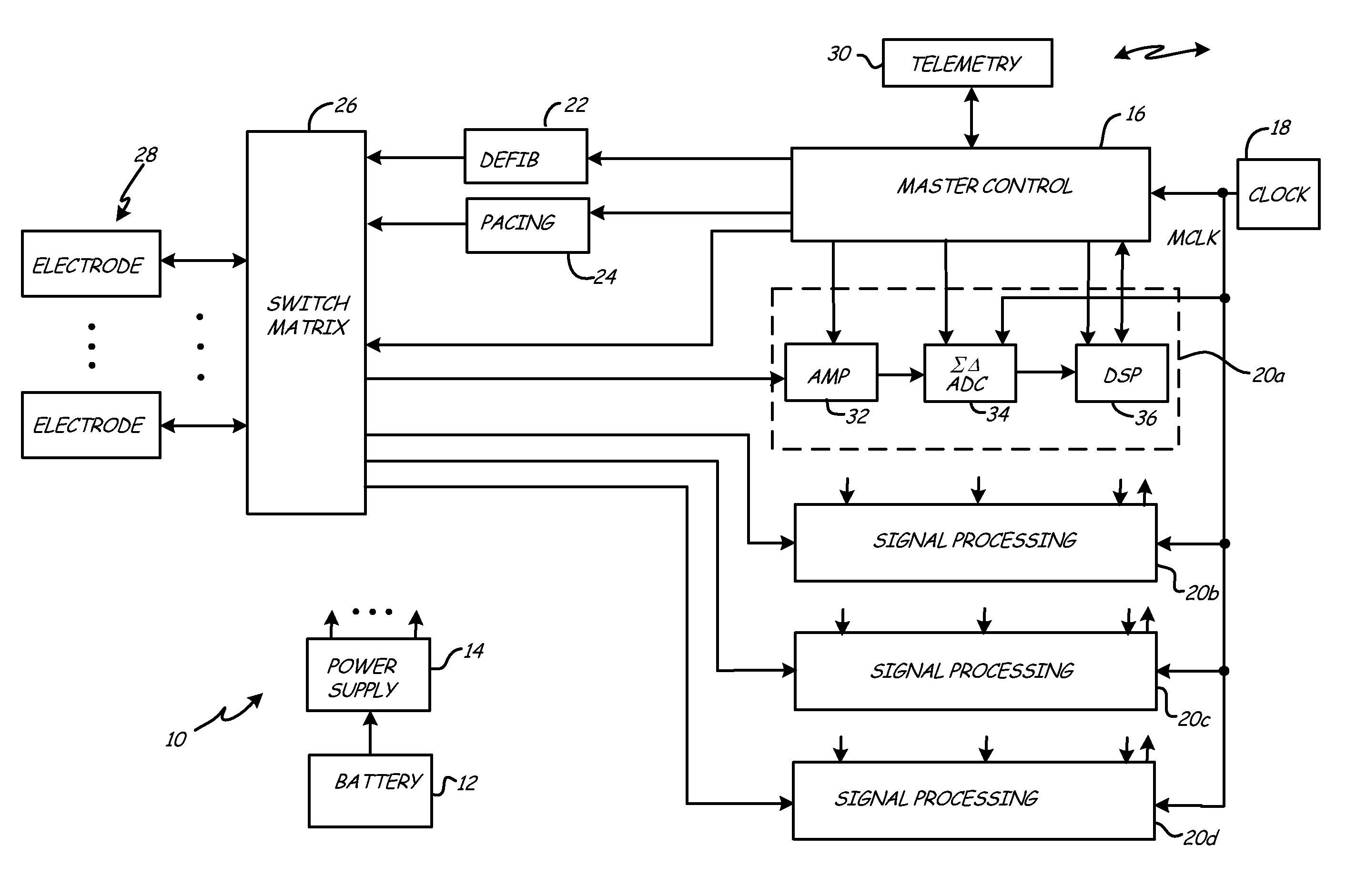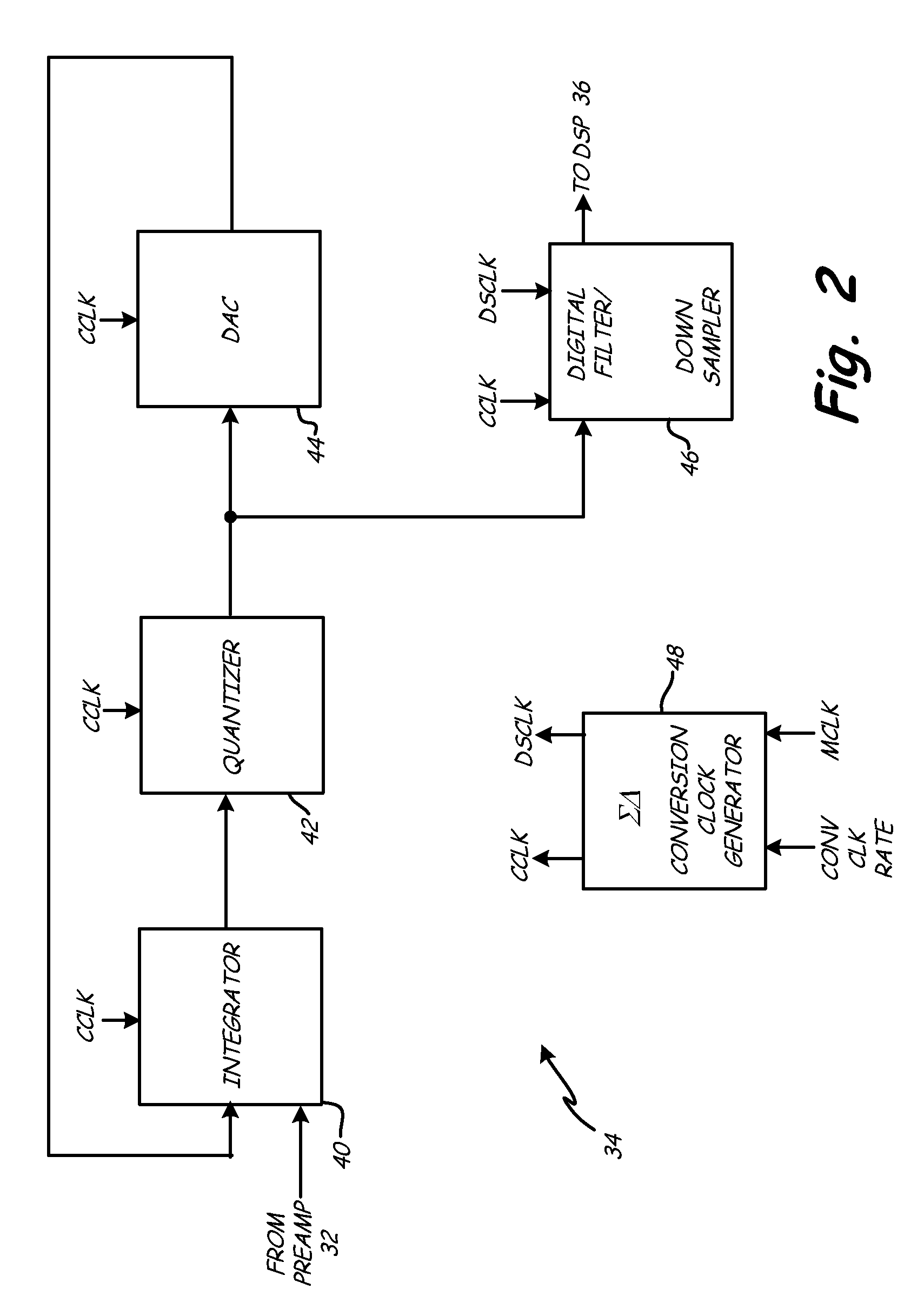Implantable medical device with adjustable sigma-delta analog-to-digital conversion clock rate
- Summary
- Abstract
- Description
- Claims
- Application Information
AI Technical Summary
Benefits of technology
Problems solved by technology
Method used
Image
Examples
Embodiment Construction
[0008]FIG. 1 is a block diagram of implantable cardioverter defibrillator (ICD) 10, which includes battery 12, power supply 14, master control 16, clock circuitry 18, signal processing channels 20a-20d, defibrillation circuitry 22, pacing circuitry 24, switch matrix 26, electrodes 28, and telemetry interface 30. Each of the signal processing channels 20a-20d is a digital signal processing channel that includes preamplifier 32, sigma-delta analog-to-digital converter (ADC) 34, and digital signal processor (DSP) 36.
[0009]Battery 12 and power supply 14 provide all of the electrical energy used by ICD 10 to perform sensing, therapy delivery, and communication with other devices. This includes supply voltages required to operate the electronic circuitry of ICD 10, and the energy required by pacing circuitry 24 to deliver pacing pulses and the voltages required by defibrillation circuitry 22 to provide cardioversion and defibrillation shocks.
[0010]Master control 16 controls the overall op...
PUM
 Login to view more
Login to view more Abstract
Description
Claims
Application Information
 Login to view more
Login to view more - R&D Engineer
- R&D Manager
- IP Professional
- Industry Leading Data Capabilities
- Powerful AI technology
- Patent DNA Extraction
Browse by: Latest US Patents, China's latest patents, Technical Efficacy Thesaurus, Application Domain, Technology Topic.
© 2024 PatSnap. All rights reserved.Legal|Privacy policy|Modern Slavery Act Transparency Statement|Sitemap



